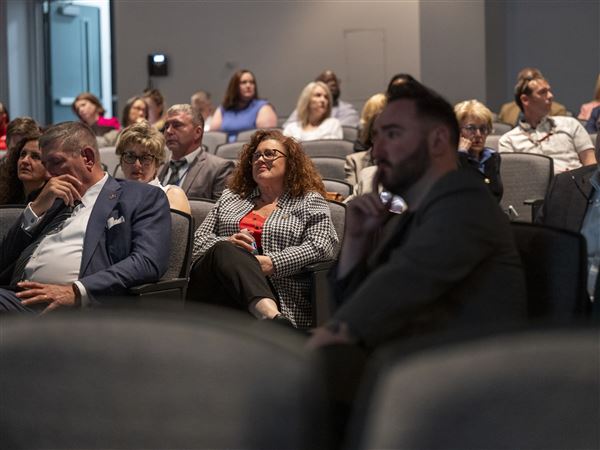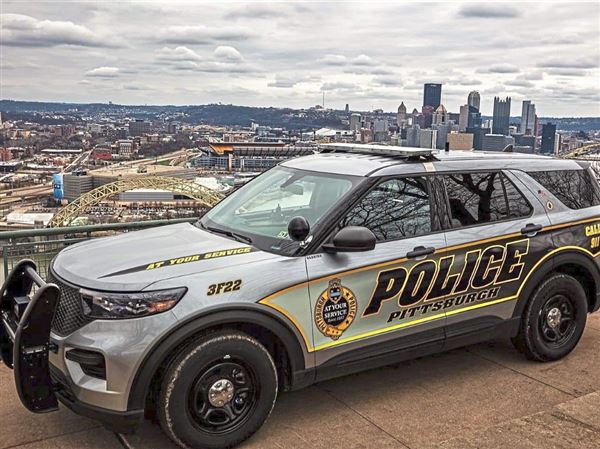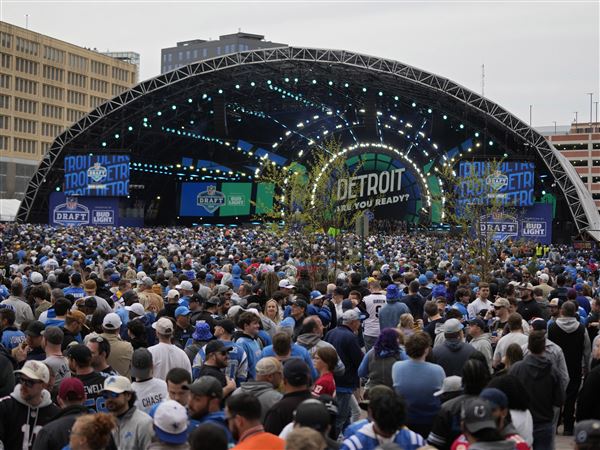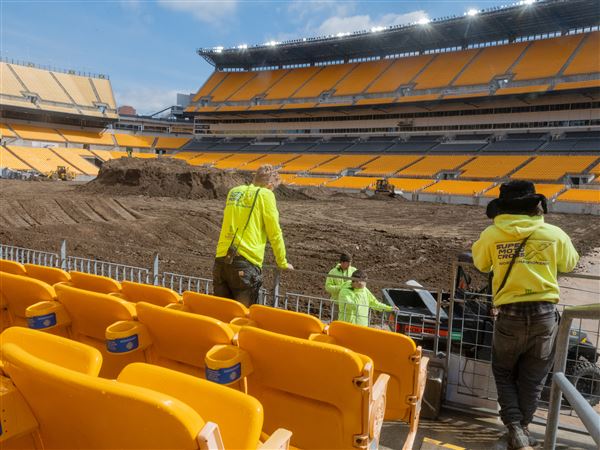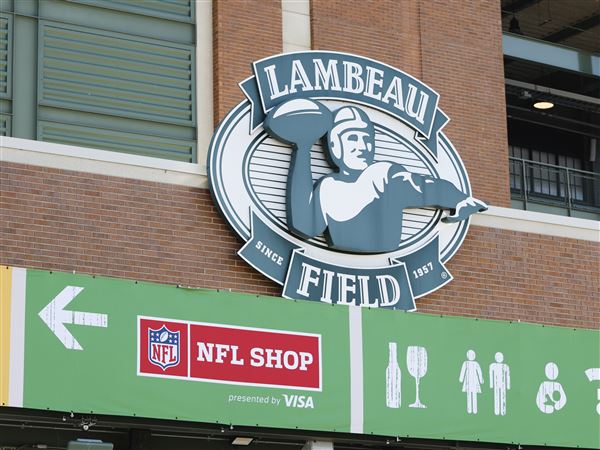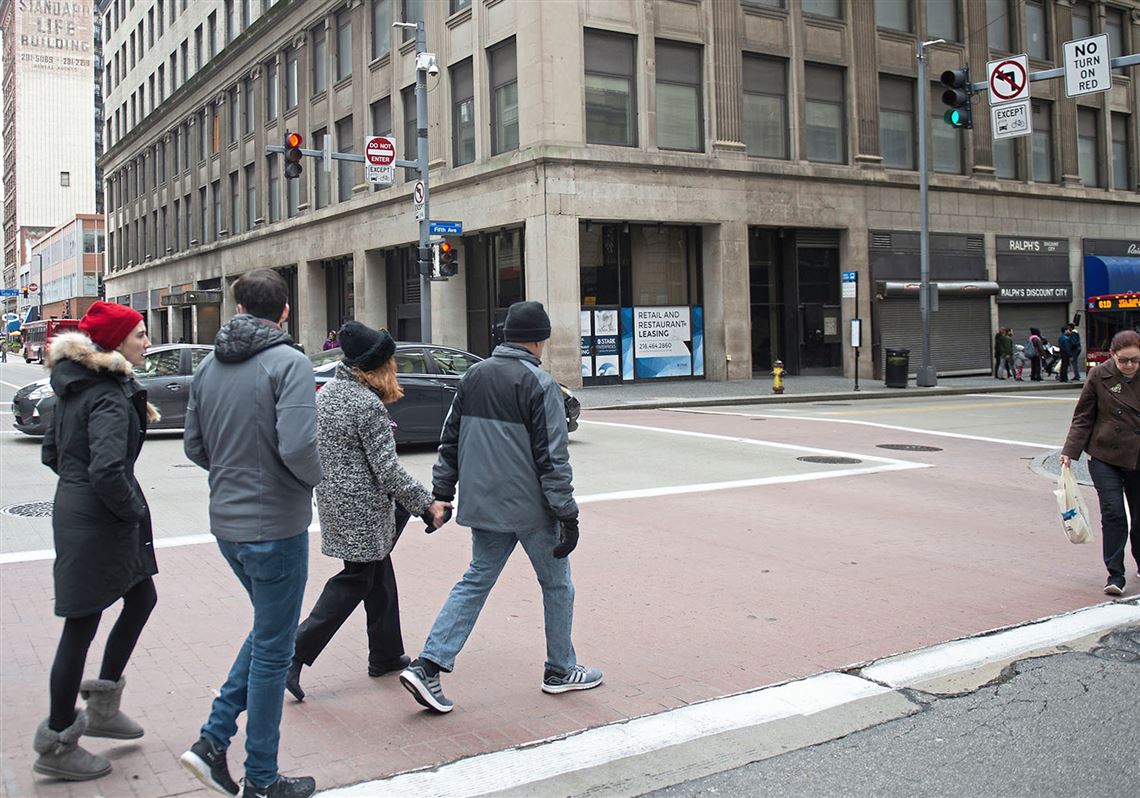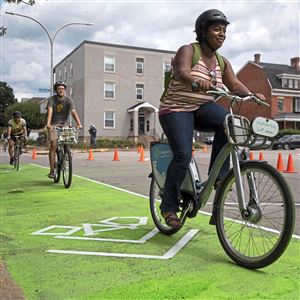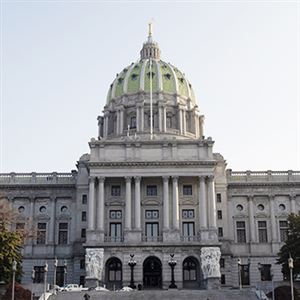After several months of working with a team of consultants to look at how people and businesses use Downtown Pittsburgh streets, the Pittsburgh Downtown Partnership is ready to hear from the public about what it considers important in the Golden Triangle.
The partnership will begin a survey this week to hear from people who use the city’s main business and entertainment district to find out what they think is important. Early next year, it will appoint a Downtown advisory group to work with the agency and hold public forums and focus group meetings in the spring and early summer with a goal of developing a Downtown Pittsburgh Mobility Plan by the end of summer.
“It’s designed to make immediate changes,” said Chris Watts, vice president of mobility at the partnership. “This plan is about the immediate ways Downtown can be optimized to provide better mobility and access to the people who use it.”
The study is funded with a $1 million grant from the Henry L. Hillman Foundation and is being conducted in conjunction with the city, Port Authority and Southwestern Pennsylvania Commission. Mr. Watts said there may be some money left from the initial grant to pay for small changes, but he expects any major changes to be funded through public-private partnerships that include money from government, foundations and private businesses.
A primary outcome for the study likely will involve prioritizing streets in the Golden Triangle for primary uses such as through traffic for vehicles, stops for delivery trucks and wider walk areas for pedestrians. The key will be determining the best uses for each street, Mr. Watts said.
“Everyone utilizes Downtown differently,” he said. “Some people think there’s too much traffic and not enough parking and other people like the walkability of Downtown and want to see that made even easier. We have to hear from everyone and see how we can meet their needs.”
The city (50 years), regional planners (25 years) and Port Authority (25 years) are developing long-term looks at transportation and mobility needs. But Mr. Watts said they realize the need for more immediate action because there’s an estimated $3.8 billion in new development expected in and around the business district in the next three to five years, especially in the Strip District and at Station Square.
“We want to preserve what makes Downtown great,” he said. “As best we can, we want to anticipate the impact a project will have so we aren’t scrambling when it gets here.”
Some changes already have happened, such as limiting part of Liberty Avenue to one lane of traffic in each direction and making Penn Avenue one lane of traffic inbound with bicycle lanes in each direction. The path for Port Authority’s Bus Rapid Transit system to link Downtown and Oakland with exclusive lanes is set with inbound buses using Fifth Avenue to Liberty to Sixth Avenue and exiting on Forbes Avenue.
Those likely won’t change, Mr. Watts said. The goal of the study is to develop a plan for the rest of Downtown so decisions aren’t made on a project-by-project basis.
Minor changes, such as how curb space is used on different streets, could be in place by the end of next year, Mr. Watts said. Bigger changes that would cost more, such as installing wider sidewalks in some areas, likely will take longer because of the need to put together financing for the work.
“We have a good understanding of the operation and use of Downtown now,” Mr. Watts said, as a result of working with consultants for several months. “Now we need to know what else people want.”
The survey will be available at https://downtownpittsburgh.com/mobilityplan/ until Jan. 20.
First Published: December 2, 2019, 12:00 p.m.

